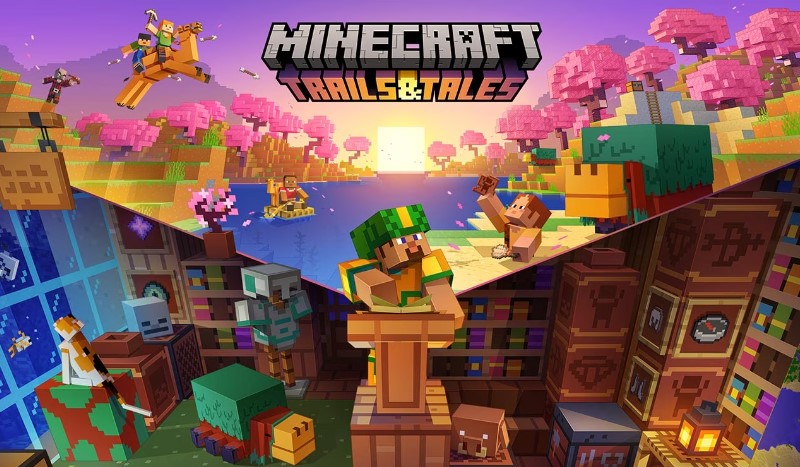15 Years of Minecraft: A Look at Its Evolution and Impact

- Country:
- United States
Spoiler Alert: This article contains spoilers. Proceed with caution if you have not watched the show/movie.
As Minecraft celebrates its 15th anniversary, it's a fitting time to reflect on the game's incredible journey and its profound impact on the gaming world. From its humble beginnings as a simple sandbox game to becoming a global phenomenon, Minecraft has evolved significantly, captivating millions of players and inspiring countless creators.
The Birth of Minecraft: Humble Beginnings
Minecraft was created by Markus "Notch" Persson and initially released to the public on May 17, 2009. The game started as a simple, blocky world where players could build and explore. Despite its basic graphics and mechanics, Minecraft's open-ended gameplay quickly garnered a dedicated following. Players were drawn to the freedom it offered, allowing them to create and explore at their own pace.
In the early days, Minecraft was a solo endeavor, with Notch continuously updating the game based on player feedback. These updates gradually introduced new features, such as more block types, crafting recipes, and survival elements. The game's community began to grow, sharing their creations and ideas, which further fueled Minecraft's popularity.
Major Updates and Expansions
Over the years, Minecraft has undergone numerous updates and expansions, each adding new dimensions to the game. Some of the most significant updates include:
The Adventure Update (2011)
The Adventure Update marked a turning point for Minecraft, introducing new game mechanics like hunger, experience points, and NPC villages. This update also added new biomes, blocks, and items, significantly enhancing the game's depth and complexity. It was during this time that Minecraft started to gain mainstream attention, with its player base growing rapidly.
The Redstone Update (2013)
Redstone, Minecraft's in-game material for creating electrical circuits, received a major overhaul in 2013. The Redstone Update introduced new components like hoppers, comparators, and droppers, allowing players to create complex machinery and automated systems. This update expanded the possibilities for creativity and innovation within the game, leading to the development of intricate contraptions and mini-games.
The Nether Update (2020)
The Nether Update brought significant changes to the game's hellish dimension, the Nether. New biomes, mobs, and resources were introduced, making the Nether a more diverse and interesting place to explore. This update also added new building materials and tools, enriching the game's crafting system and encouraging players to venture into previously avoided areas.
Minecraft's impact extends far beyond the gaming world. It has become a cultural phenomenon, influencing various aspects of society, including education, entertainment, and even architecture.
Education and Learning
Minecraft has been widely adopted as an educational tool, used to teach subjects such as mathematics, history, and computer programming. The game's block-based world provides a unique platform for interactive learning, allowing students to visualize complex concepts and collaborate on projects. Minecraft: Education Edition, a version of the game tailored for classroom use, has been embraced by schools worldwide, helping to engage students in a fun and meaningful way.
Entertainment and Media
The game's popularity has spawned a vast array of media content, from YouTube channels dedicated to Minecraft gameplay to official merchandise and spin-off games like Minecraft Dungeons. Content creators have built massive audiences by showcasing their adventures, tutorials, and creative builds, further cementing Minecraft's place in popular culture. Additionally, Minecraft-themed books, shows, and conventions have emerged, celebrating the game's vibrant community and its creative potential.
Architectural and Urban Design
Minecraft has also found a niche in the field of architecture and urban design. The game's building mechanics allow architects and designers to create virtual models of real-world structures, experimenting with designs and concepts in a cost-effective and interactive environment. Some architects have even used Minecraft to engage the public in the design process, inviting community members to contribute ideas and feedback on proposed projects.
The Future of Minecraft
As Minecraft enters its 15th year, its future looks brighter than ever. Mojang Studios, the developer behind Minecraft, continues to release regular updates and new content, ensuring that the game remains fresh and exciting for both new and veteran players.
The development team has teased several upcoming features and expansions, promising to introduce new biomes, mobs, and gameplay mechanics. These updates aim to expand the game's universe further, providing players with new challenges and opportunities for creativity.
Community and Player-Driven Content
Minecraft's community remains one of its greatest strengths. Player-driven content, such as mods, custom maps, and texture packs, continues to thrive, adding endless variety and replayability to the game. Mojang Studios actively supports this community by providing tools and resources for creators, fostering an environment where innovation and collaboration can flourish.
Also Read: Microsoft's AI Integration: How Copilot is Transforming Minecraft and Xbox Games
- READ MORE ON:
- 15 years of Minecraft
- Minecraft evolution
- Minecraft impact
- Minecraft updates
- Minecraft community
- Minecraft education
- Minecraft future
- Minecraft history
- Mojang Studios
- Entertainment and Media
- Minecraft Dungeons
- Minecraft Gameplay
- Minecraft
- Notch
- Minecraft The Adventure
- Minecraft The Redstone
- Minecraft The Nether Update










